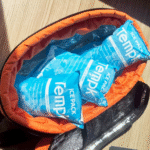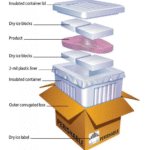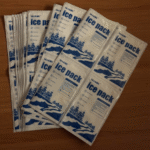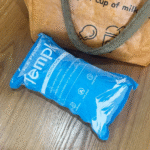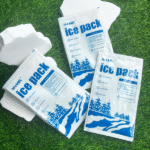Cooler Bag Dry Ice Pack Sheets: How to Keep Your Perishable Goods at Optimal Temperatures
Shipping perishable items requires highly reliable cooling solutions, and one of the most effective methods is using cooler bag dry ice pack sheets. These specialized sheets ensure that your temperature-sensitive products, como la comida, productos farmaceuticos, y especímenes biológicos, remain intact during transit, all while being efficient and safe to use. This article provides a comprehensive guide on how cooler bag dry ice pack sheets work, sus beneficios, mejores practicas de uso, safety considerations, and the latest trends in dry ice shipping.
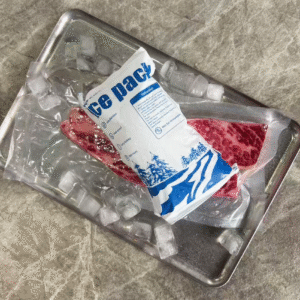
-
How do cooler bag dry ice pack sheets maintain temperature?
-
What are the best practices for using dry ice pack sheets effectively?
-
What are the safety considerations when shipping with dry ice?
-
How can you improve your shipping processes for perishable goods?
How Do Cooler Bag Dry Ice Pack Sheets Maintain Temperature?
Dry ice pack sheets leverage the cooling properties of solid carbon dioxide, which has a temperature of -78.5°C (-109.3°F). This extreme cold is perfect for preserving frozen foods, productos farmaceuticos, y otros productos sensibles a la temperatura. A diferencia del hielo tradicional, which melts into water and can damage products, dry ice sublimates directly into carbon dioxide gas, No dejando residuos líquidos atrás. This feature is particularly beneficial for moisture-sensitive items.
Cooler bag dry ice pack sheets work by absorbing heat from the products they’re cooling. Mientras el hielo seco se sublima, it converts into gas, maintaining an ultra-low temperature throughout the process. These sheets are ideal for scenarios where extended cooling is required without the risk of liquid formation.
Hielo seco vs. Paquetes de hielo tradicionales: A Comparison
Traditional ice packs are effective for short-term cooling but have limitations when it comes to long durations and temperature control. As ice melts, it generates water that can damage moisture-sensitive goods. hielo seco, por otro lado, sublimates without producing any liquid, which is critical for shipping certain perishable goods.
| Método de enfriamiento | Rango de temperatura | Duración del enfriamiento | Mejor para |
|---|---|---|---|
| Hielo seco | -78.5°C (-109.3°F) | 24–48 horas | Alimentos congelados, productos farmaceuticos |
| Hielo tradicional | 0°C (32°F) | 4–12 horas | Bebidas, less-sensitive goods |
Best Practices for Using Cooler Bag Dry Ice Pack Sheets
Using cooler bag dry ice pack sheets correctly is essential for ensuring the safety and quality of your shipments. Below are the top best practices to ensure optimal performance:
1. Calculate the Right Amount of Dry Ice
To maintain the cold chain during shipping, usar aproximadamente 1 pound of dry ice for every 24 horas de transito. The exact amount can vary based on the type of product being shipped, la duración del envío, and the environmental conditions. Para envíos más largos, adjust the quantity to accommodate higher temperatures or extended transit times.
2. Utilice embalaje aislado
Dry ice works best in insulated packaging, which helps to preserve its cooling ability over time. Make sure to use vacuum-insulated containers or cooler bags designed to retain the cold longer. These packages will help prevent the dry ice from warming up too quickly and ensure that your shipment remains at the desired temperature for the duration of transit.
3. Proper Sealing of Packaging
Ensure that your packaging is sealed properly. Air-tight packaging prevents cold air from escaping and minimizes the sublimation rate of the dry ice. A tightly sealed container also prevents leakage of carbon dioxide gas during shipping, which can cause pressure buildup and lead to package rupture.
How to Pack Dry Ice for Safe Shipping
-
Place the dry ice at the bottom of the package, followed by absorbent materials to prevent direct contact with items.
-
Wrap the items in bubble wrap or foam to protect them from direct exposure to the dry ice.
-
Asegurar una ventilación adecuada by incorporating ventilation holes in the packaging. This allows the gas to escape, preventing pressure buildup that could cause damage.
Are There Safety Considerations When Shipping with Dry Ice?
El manejo del hielo seco requiere precaución. It is extremely cold, and improper handling can lead to serious injury. Además, as dry ice sublimates, libera gas de dióxido de carbono, que puede desplazar el oxígeno en espacios confinados, creating a potential suffocation risk. Here are some essential safety tips to consider:
-
Wear Insulated Gloves: Always wear insulated gloves when handling dry ice to protect yourself from frostbite.
-
Asegurar la ventilación adecuada: Always use ventilated containers for shipping dry ice. Avoid using airtight packaging to allow gas to escape safely.
-
Label Packages Correctly: Ensure that the packaging is clearly marked with “Hielo seco” and that it contains handling instructions to ensure the safety of all personnel involved.
Additional Tips for Safe Shipping
-
Train your staff on how to handle dry ice according to safety guidelines from organizations like the IATA and DOT.
-
Use temperature tracking systems, such as temperature loggers or smart sensors, to monitor and ensure the shipment remains within safe temperature ranges.
Consejo práctico: A pharmaceutical company shipping vaccines used cooler bag dry ice pack sheets and successfully reduced spoilage by 50% during international transit, ensuring that the vaccines arrived in optimal condition.
2025 Tendencias e innovaciones en el envío de hielo seco
The dry ice shipping industry continues to evolve as new technologies and innovations improve efficiency, sostenibilidad, y control de temperatura.
Key Developments in the Industry
-
Soluciones de embalaje inteligentes: Temperature-sensitive labels and real-time tracking sensors help ensure that shipments stay within the required temperature range, even when there are delays in transit.
-
Materiales de aislamiento avanzado: Companies are adopting high-performance insulation materials that provide better thermal resistance, helping reduce the need for dry ice and minimizing waste.
Common Questions About Shipping with Dry Ice
Q1: Can dry ice be used to ship electronics?
Sí, dry ice can be used for shipping electronics, but care must be taken to prevent direct contact with electronic components. Use insulated containers to avoid any moisture exposure.
Q2: How long can dry ice keep products frozen during shipping?
Dry ice can keep products frozen for 24–48 hours depending on the amount used and the quality of insulation. Always calculate your dry ice needs before shipping to ensure your items remain at the right temperature.
Conclusión y recomendaciones
Cooler bag dry ice pack sheets offer an effective solution for shipping temperature-sensitive goods. By using these sheets correctly and following best practices, you can ensure that your products remain in good condition during transit. A medida que avanza la tecnología, 2025 brings even more innovations that enhance dry ice shipping processes, including improved insulation materials, embalaje inteligente, and eco-friendly alternatives.
Action Suggestion: If you’re ready to optimize your shipping strategy, consult with logistics experts who specialize in cold chain solutions to determine the best dry ice packing strategy for your products.
Acerca de Tempk
Y tempk, we specialize in providing cutting-edge cold chain logistics solutions, including cooler bags and dry ice pack sheets. Our technology ensures that your temperature-sensitive products are securely and efficiently transported, whether by air, tierra, or sea. With years of experience and a commitment to customer satisfaction, we offer tailored solutions that meet your specific shipping needs.
Llamado a la acción: Reach out today for expert advice on your cold chain logistics requirements and optimize your shipping solutions.


















